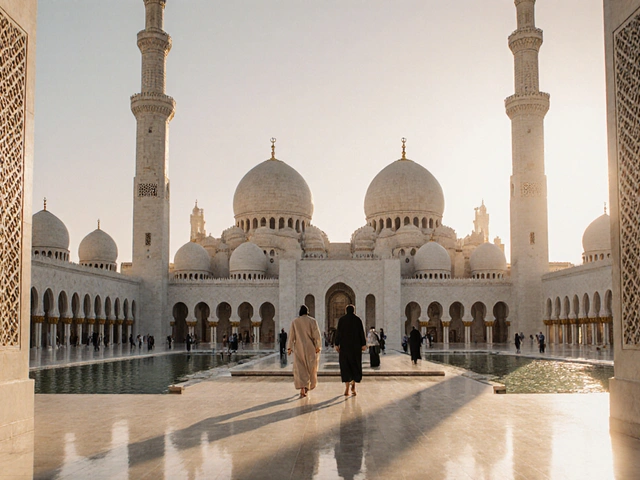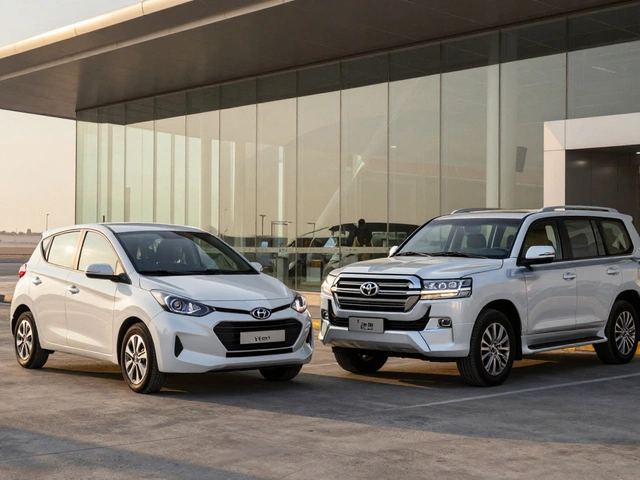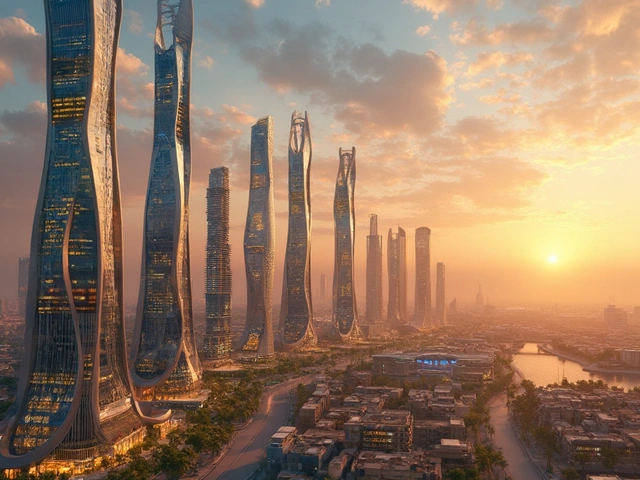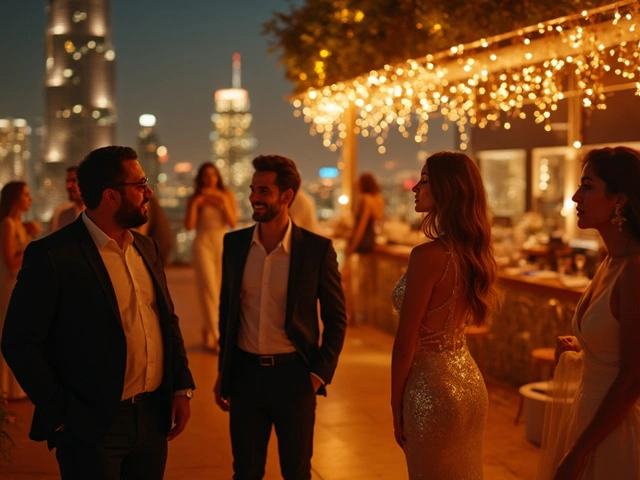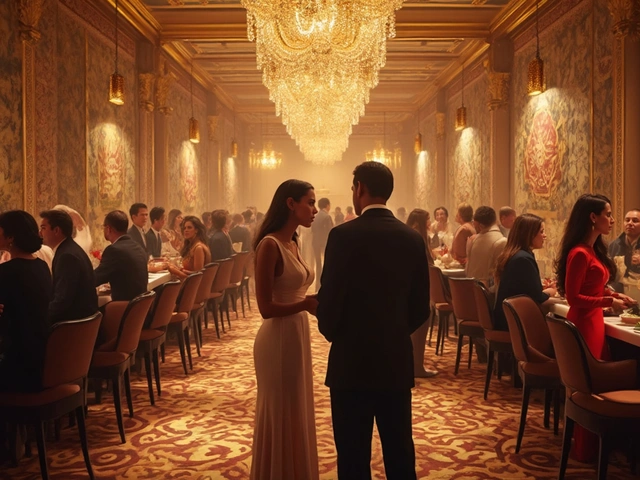You’ve seen it in movies. You’ve scrolled past it on Instagram. You’ve stood at the base of it, neck craned, wondering how something so impossibly tall could even exist. The Burj Khalifa isn’t just a building. It’s a statement. A symbol. A feat that changed how the world sees cities, ambition, and human ingenuity.
It wasn’t built to be the tallest. Not really. Dubai didn’t set out to break records just for the sake of it. They wanted to build something that would anchor their future - something that would say, ‘We’re not just a desert city with oil money. We’re a global player.’ And the Burj Khalifa? It delivered - louder than anyone expected.
What Makes the Burj Khalifa More Than Just a Skyscraper?
Let’s get real for a second. There are a lot of tall buildings. Shanghai has a few. Seoul, New York, Chicago - they all have their own giants. But none of them carry the same weight. None of them make you pause mid-step when you see them. Why?
The Burj Khalifa is 828 meters tall. That’s 2,717 feet. To put that in perspective: if you stacked 15 giraffes on top of each other, you’d still fall short. It’s more than twice the height of the Eiffel Tower. It has 163 floors. And it wasn’t just slapped together - it was engineered with precision that borders on art.
The design? Inspired by the desert flower Hymenocallis. The shape? A Y-shaped floor plan that cuts wind resistance. The materials? Over 330,000 cubic meters of concrete, 39,000 metric tons of steel rebar, and a cladding system that handles Dubai’s 50°C summers without cracking. Every detail was calculated - not just for height, but for survival.
And here’s the kicker: it didn’t just break the record for tallest building. It broke every record in the category. Highest observation deck. Highest outdoor elevator. Most floors in a single structure. It didn’t just win - it redefined the game.
The Engineering Behind the Impossible
Building something this tall isn’t like stacking Legos. Wind alone can push the top of the Burj Khalifa over two meters side to side. That’s like a small car swaying in a storm. If the structure wasn’t designed to handle that, it would sway too much - and people inside would get dizzy, sick, even scared.
So what did they do? They built a buttressed core. Think of it like a tripod holding up a tent. The central core is reinforced with high-strength concrete, and three wings fan out from it, each acting like a brace. This design, developed by Skidmore, Owings & Merrill, is why the building doesn’t just stand - it stands calmly.
Then there’s the elevator system. 57 elevators. Some travel at 10 meters per second. That’s faster than most cars on the highway. One ride from the ground to the 124th floor takes less than 60 seconds. And they didn’t just upgrade the motors - they redesigned the entire pressure system so your ears don’t pop like you’re on a plane.
Water is another nightmare. At that height, pumping water up to the 150th floor is like trying to squirt a soda can to the moon. They solved it with a dual-tier system: one set of pumps for the lower floors, another for the upper. And they recycle 95% of the water used in the building’s cooling system. Sustainability wasn’t an afterthought - it was baked in.
Why It’s More Than a Tourist Attraction
Yes, millions come to see it. Yes, you can buy a ticket to the observation deck and snap a selfie with the desert stretching out below you. But the Burj Khalifa isn’t just a monument to tourism.
It’s home to over 900 residents. People live here. They wake up to views most people only dream of. They take the elevator to their penthouse, cook dinner, watch the sunset turn the sky gold, and go to sleep with the city lights blinking like stars below them.
It houses corporate offices - including global firms that chose Dubai as their regional hub because this building says, ‘We mean business.’ It has luxury hotels, high-end retail, and even a mosque on the 58th floor. It’s not a theme park. It’s a functioning city within a building.
And it changed Dubai’s skyline - literally. Before the Burj Khalifa, Dubai had a few tall buildings. After? The entire city reimagined what was possible. The Cayan Tower, the Princess Tower, the Address Downtown - they all followed in its shadow. The Burj didn’t just become an icon. It became a blueprint.
The Cultural Impact: A Symbol Beyond Architecture
When the Burj Khalifa opened on January 4, 2010, the world stopped scrolling. News outlets ran headlines like ‘The World’s Tallest Building Is Now a Reality.’ But what people didn’t say out loud was this: ‘Can they really do that?’
For decades, the tallest buildings were in the U.S. or Europe. The Burj Khalifa flipped that script. It proved that a country with a population of under 10 million - and a history shaped by desert trade, not industrial power - could out-engineer the West. It became a symbol of what’s possible when vision meets resources and determination.
It’s been featured in over 100 films and TV shows. It lit up for New Year’s Eve in a display that reached 50 kilometers into the sky. It was the centerpiece of Dubai’s Expo 2020. It’s the face of the nation on every global map.
And here’s something most tourists don’t realize: the Burj Khalifa is a source of national pride. Not just for Emiratis, but for the millions of workers from over 150 countries who helped build it. It’s a monument to global collaboration - built by Indians, Filipinos, Pakistanis, Egyptians, and Emiratis, all working toward a single, impossible goal.
How It Compares to Other Global Icons
Let’s be honest - the Eiffel Tower, the Statue of Liberty, the Sydney Opera House - they’re all icons. But they’re different. They’re cultural. They’re historical. The Burj Khalifa? It’s the first modern skyscraper to become a global symbol without being tied to a nation’s past.
Here’s how it stacks up:
| Icon | Height | Year Completed | Primary Purpose | Global Recognition |
|---|---|---|---|---|
| Burj Khalifa | 828 meters | 2010 | Residential, commercial, observation | Universal - instantly recognizable worldwide |
| Empire State Building | 443 meters | 1931 | Office, observation | Strong in North America and pop culture |
| Eiffel Tower | 300 meters | 1889 | Tourist attraction, communications | Cultural symbol of France |
| Tokyo Tower | 333 meters | 1958 | TV broadcast, observation | Popular in Asia, less known globally |
The Burj Khalifa doesn’t just stand taller - it stands more present. It’s not just seen. It’s felt. It’s on every skyline photo, every travel brochure, every tech ad for a new smartphone. It’s become the visual shorthand for ‘future.’
What It Means for Dubai Today
Dubai didn’t build the Burj Khalifa to be a one-hit wonder. It built it to be the anchor of a new identity. Today, the building is part of Downtown Dubai - a district that includes the Dubai Mall, the Dubai Fountain, and luxury hotels. It’s the heart of the city’s tourism economy.
But beyond tourism, it’s changed how Dubai thinks about itself. Before the Burj, the city was known for luxury shopping and oil. Now? It’s known for pushing limits. For innovation. For turning desert dreams into steel and glass reality.
And it’s working. Dubai now attracts over 17 million tourists a year - many of them here just to see the Burj. It’s not just a building. It’s the reason people choose Dubai over Paris, New York, or Tokyo.
Frequently Asked Questions
How long did it take to build the Burj Khalifa?
Construction began in 2004 and was completed in 2010 - just under six years. Over 12,000 workers from more than 100 countries worked on the project. At its peak, 30,000 people were involved in the design, engineering, and construction phases.
Can you visit the top of the Burj Khalifa?
Yes. The observation decks are on the 124th, 125th, and 148th floors. The 148th-floor deck, called At the Top SKY, is the highest observation deck in the world. Tickets can be booked online in advance, and timed entry helps manage crowds. The views are unforgettable - you can see clear to the desert horizon.
Is the Burj Khalifa still the tallest building in the world?
As of 2025, yes. The next tallest, Jeddah Tower in Saudi Arabia, is still under construction and has faced delays. Even if it finishes, it won’t surpass the Burj Khalifa’s structural and engineering legacy. The Burj remains the tallest completed building ever built by human hands.
How much does it cost to live in the Burj Khalifa?
Residential units range from $1,000 to over $10,000 per square meter, depending on the floor and view. Penthouse apartments can sell for over $30 million. Maintenance fees are high - around $15 per square foot annually - but residents get 24/7 security, private elevators, and access to exclusive amenities.
What’s the best time to visit the Burj Khalifa?
Sunset is the most popular - the sky turns gold, the city lights come on, and the Dubai Fountain shows its best show. But if you want fewer crowds and cooler temperatures, go in the early morning. The air is clearer, the light is softer, and you’ll have the observation deck almost to yourself.
Final Thought: Why It Still Captures the World
The Burj Khalifa doesn’t need to be the tallest forever. It doesn’t need to be the most beautiful or the most expensive. What it has is something rarer: it made the impossible feel real.
It turned a desert into a skyline. It turned a dream into a destination. And it showed the world that ambition - when paired with precision, patience, and global collaboration - can build something that lasts longer than any record.
You don’t just visit the Burj Khalifa. You leave changed. Not because you saw a tall building. But because you saw what humanity can do when it dares to reach higher - and doesn’t stop until it gets there.

